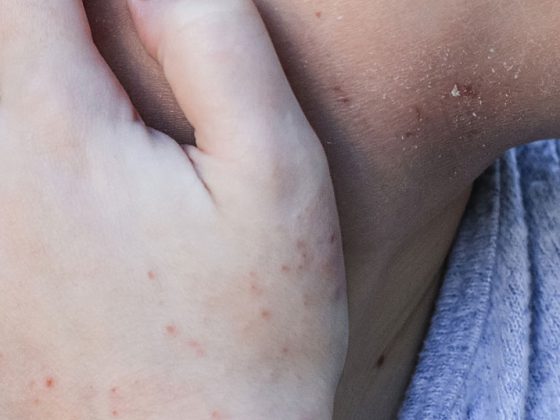ASH attendees immersed themselves in the world of hematology at the end of 2019. They learned about current trial data and findings around multiple myeloma, CAR-T cell therapy in LBCL, and maintenance therapy in AML, among others.
The majority of patients with multiple myeloma are affected by relapse, which in many cases occurs during therapy with lenalidomide. The results reported by Usmai et al. presented CANDOR trial therefore investigated the efficacy of lenalidomide-free regimens in patients with relapsed/refractory (r/r) multiple myeloma. A total of 466 patients who had previously received one to three prior therapies were enrolled in the open-label Phase III trial. About one-third of patients were refractory to lenalidomide. They were randomized to carfilzomib and dexamethasone (Cd) or daratumumab plus carfilzomib and dexamethasone (DCd). After a median follow-up of 17 months, median progression-free survival (PFS) under Cd was 16 months; PFS had not yet been achieved in the triple-combination group. This PFS benefit was also observed in lenalidomide-exposed and refractory patients. In addition, the proportion of patients with no detectable minimal residual disease (MRD) at 12 months was nearly 10-fold higher under DCd than under Cd (12.5% vs. 1.3%). The incidence of treatment discontinuation due to adverse events was comparable in both groups.
Axicabtagen ciloleucel: Successful at r/r LBCL.
In CAR-T cell therapy, autologous T cells are genetically modified to carry a tumor-specific chimeric antigen receptor (CAR) on their surface. After reinfusion, CAR-T cells induce apoptosis and necrosis of the recognized target cells. Axicabtagen-ciloleucel (Axi-cel) is a CAR-T cell therapy directed against CD19-expressing tumor cells that is being used to treat patients with r/r large B-cell lymphoma (LBCL) based on data from the ZUMA-1 trial (cohorts 1 and 2). The data presented make it clear that patients can benefit from treatment with Axi-cel with significantly increased overall survival (OS) compared to previously available salvage regimens. This conclusion is suggested by a descriptive comparison of the results of the ZUMA-1 study and SCHOLAR-1 cohort. In this retrospective analysis of 497 r/r LBCL patients treated with previously available salvage regimens, the OS rate at two years was 12%, compared with 50% with Axi-cel (hazard ratio 0.27). In addition, 3-year data are available for cohorts 1 and 2 of the ZUMA-1 study, highlighting the continued efficacy of Axi-cel: After a median follow-up of 39.1 months, the overall survival rate was 47%.
Immunotherapy is superior to chemotherapy in children with relapsed B-ALL
As a late-breaker abstract, data were presented confirming the benefit of blinatumomab – a bispecific T-cell engager antibody construct (BiTE®) – in pediatric patients with relapsed acute lymphoblastic leukemia (B-ALL) and minimal residual disease (MRD) after initial chemotherapy. Enrollment in the study was stopped early after an interim analysis highlighted the benefits of blinatumomab compared to standard chemotherapy: After a median follow-up of 1.4 years, PFS and OS rates of patients on blinatumomab were significantly higher than those on standard chemotherapy (59% vs. 41% and 79% vs. 59%, respectively). In addition, more blinatumomab patients underwent transplantation (73% vs. 45%). Furthermore, blinatumomab was better tolerated than standard chemotherapy.
Oral azacitidine as future maintenance therapy in AML?
According to another late-breaking abstract, an oral form of azacitidine therapy (CC-486) can achieve a statistically significant and clinically meaningful improvement in OS and relapse-free survival in elderly patients with newly diagnosed acute myeloid leukemia (AML) who were in remission after standard induction chemotherapy. 472 AML patients aged 55 to 86 years with intermediate- or low-risk cytogenetic disease were randomized to CC-486 or placebo – each plus best supportive care – until relapse within four months of achieving complete remission in the QUAZAR AML-001 trial. After a median follow-up of 41.2 months, the risk of death was 31% lower in CC-486 patients than placebo (median OS 24.7 vs. 14.8 months). The most common adverse events grade ≥3 or 4 were neutropenias, thrombocytopenias, and anemias.
Improvements needed in access to therapy
Studies were also presented in Orlando that explored the extent to which demographics and socioeconomic status affect access to clinical trials and effective treatments for patients with hematologic diseases. Some studies found that ethnic minorities and elderly patients benefit from cancer treatments in similar ways to other patient groups. However, there have also been studies indicating that significant gaps remain in access to care and outcomes. This underscores the urgent need for renewed efforts to eliminate disparities.
DOACs plus ASA – more harm than good
Also of note was a study involving patients with a history of atrial fibrillation or venous thromboembolism (VTE). It showed that taking acetylsalicylic acid (ASA) in addition to a direct oral anticoagulant (DOAC) resulted in more bleeding episodes with comparable rates of stroke, VTE, and myocardial infarction compared with DOAC alone. In almost one third of the patients included in the study (n=2045), there was no clear indication for taking ASA, such as a recent myocardial infarction. Prof. Jordan Schaefer, MD, Ann Arbor, Michigan, USA, therefore called for careful consideration of the relative risk and potential benefit to the patient when adding ASA or continuing ASA administration in addition to a DOAC.
Source: ASH 2019
InFo ONCOLOGY & HEMATOLOGY 2020; 8(1): 31 (published 2/23/20, ahead of print).











